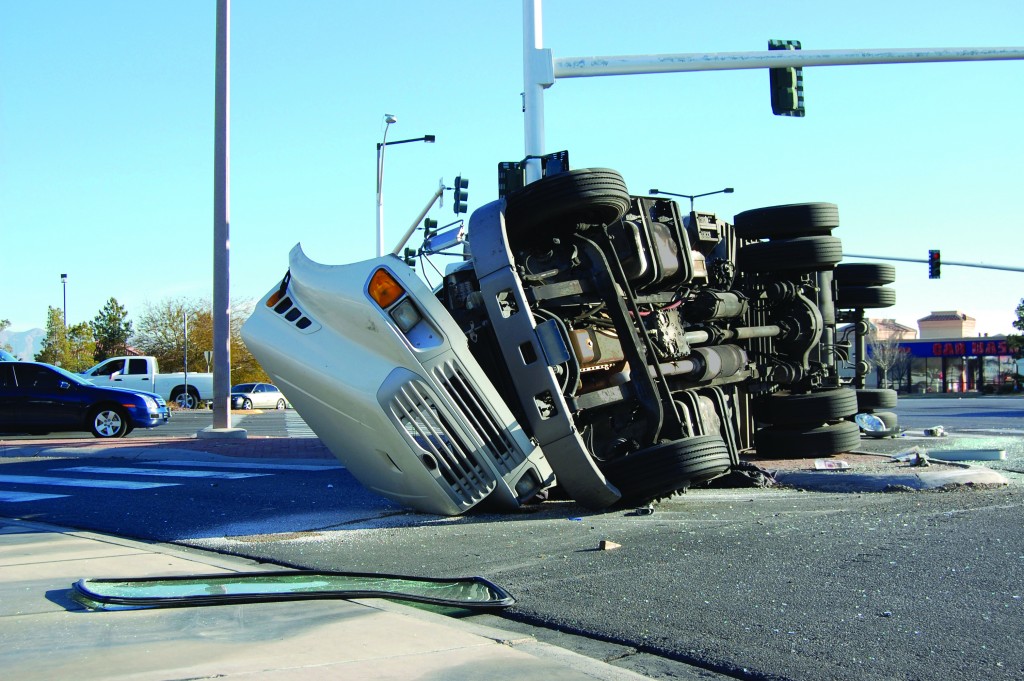6 steps to reduce truck collision costs
Things that can go wrong will go wrong. That observation, otherwise known as Murphy’s Law, proves itself time and again in trucking. Look no further than collision wreckage for proof.
As bad as things seem, such situations can easily spiral out of control as well. Poor decisions lead to everything from additional injuries to environmental spills, while giving lawyers the fodder for expensive lawsuits.

“Knowing how to respond to a collision is the last thing covered in driver orientation,” says Bonnie Learn, an executive risk services consultant at Northbridge Insurance. “It probably should be the first thing.”
Here are her six steps to help control collision costs
1. Plan for collisions before they happen
“It’s absolutely key to have a well-documented, well-thought-out plan,” Learn says.
Such fleet plans identify roles for everyone involved in a collision response, from company personnel to preferred towing companies, as well as detailed checklists that identify every step they’ll follow.
Who does a driver call at the fleet? What steps will the person receiving that call follow? How will the cargo be recovered? They’re not the types of questions to be answered on the fly.
2. Practice the plans
Detailed plans are easily forgotten if they are left to gather dust on a shelf or tucked into a rarely accessed folder on a company server. The best way to ensure a plan has the latest contact information — and that everyone understands their respective roles — is to conduct a mock disaster.
It begins with an after-hours call to the person that drivers will want to reach after a collision. Can they be reached, and can they access the checklists and contact information they would require?
“Think about CPR,” Learn says. “If you’ve done it once, it’s 100 times more likely you’ll do it well.”
3. Put personal safety first
In the wake of a collision, the first thing a driver should focus on is personal safety. There are all too many examples of people who have been injured stepping into a live lane of traffic. This means surveying the surroundings and grabbing a reflective vest before leaving the cab.
The person answering the driver’s initial call can offer some important reminders about such practices.
4. Control the spills
Ruptured fuel tanks will leak. And if diesel or other vehicle fluids trickle into waterways, expensive environmental clean-ups will follow.
“Try to avoid water at all costs,” Learn says.
Dangerous goods or liquid fuel-grade cargo will require unique spill responses, but any truck can draw on spill kits that include absorbent material to soak up a small amount of diesel, or the socks, booms and sewer covers that can keep larger leaks from spreading.
5. Picture the evidence
Sensors and dashcams capture and measure factors leading to the moment a collision occurs, but they don’t always tell the full story. It’s why Learn encourages truck drivers to take several pictures of collision evidence before it disappears. Tire tracks in snow, for example, will begin to melt. And wreckage will be moved.
The goal is to capture the scene from many different angles. (“There was a time I would get 17 pictures of the exact same dent on the exact same bumper,” Learn says.)
The first few images can be taken through windows from inside the cab. Then it’s a matter of taking photos of the accident scene from different vantage points, stepping back about 50 feet at a time. Drivers should be encouraged to photograph signage and damaged cargo as well.
6. Share the details … with police
Truck drivers are encouraged to cooperate with police, but Learn cautions that answers should be limited to accurate and direct responses to specific questions.
This is not the time to admit guilt. Instead, drivers should be told to describe clear facts such as the direction people were traveling at the time of the collision, rather than assuming why something happened, she adds. “You can’t understand what the other driver was doing.”
Have your say
This is a moderated forum. Comments will no longer be published unless they are accompanied by a first and last name and a verifiable email address. (Today's Trucking will not publish or share the email address.) Profane language and content deemed to be libelous, racist, or threatening in nature will not be published under any circumstances.